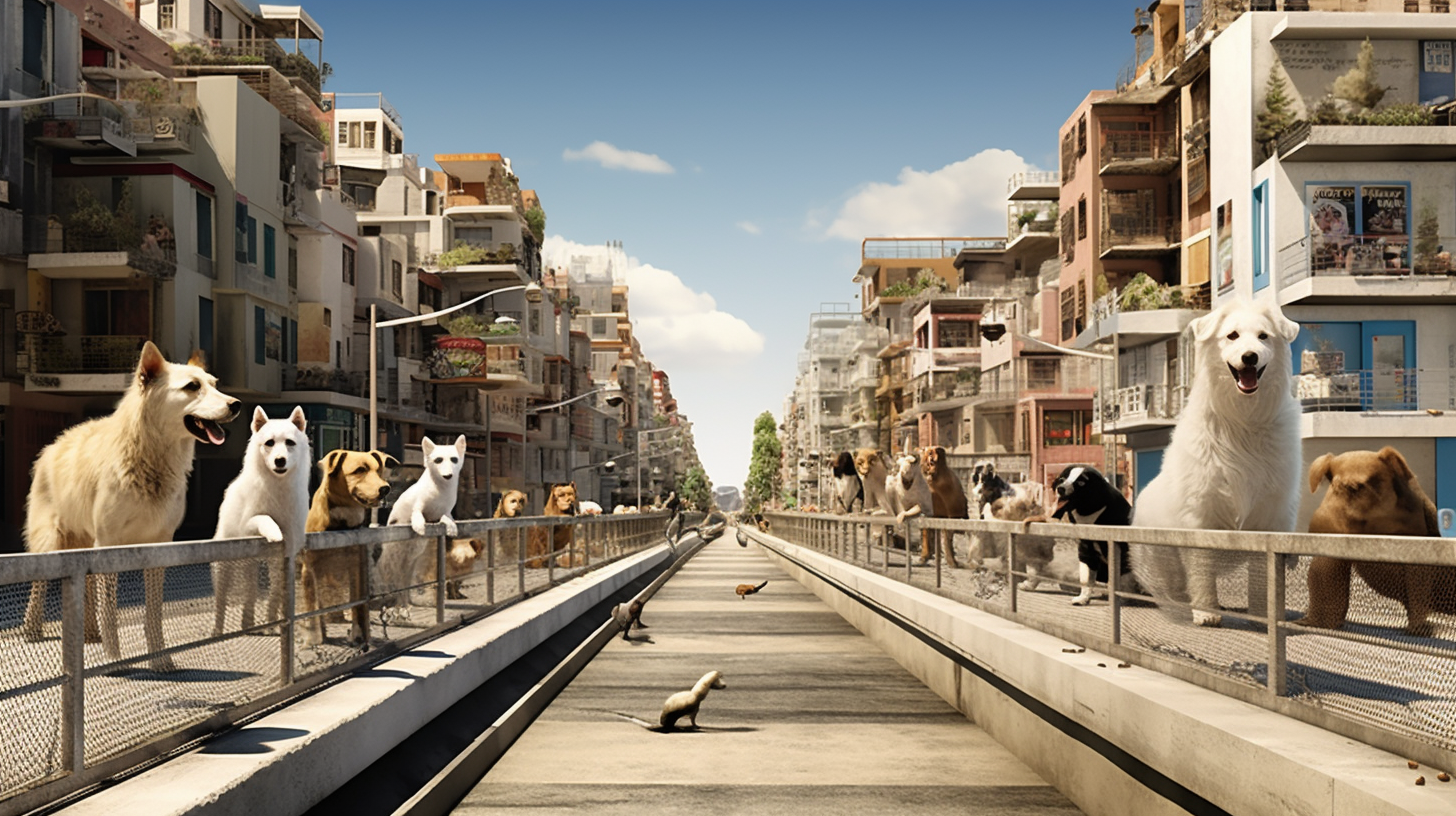Zooming through the concrete jungles of the Canine Republic, a new era of urban development is on the rise, one tail-wag at a time. Fast Paws City Planning is the latest trend in dog-centric urban design, focusing on the needs and wants of our four-legged citizens who desire nothing more than to ruff it out on the fast lanes.
The movement began in the bustling metropolis of Barkington, where crowded sidewalks and narrow dog parks led to a spike in tail tangles and leash lashings. With the populace on the rise and more pups per square foot than ever before, city planners have taken to the drawing board to fetch solutions that blend safety, sustainability, and most importantly – speed!
The cornerstone of Fast Paws City Planning lies in Wide-Track Walkways. These spacious corridors allow for pups of all sizes to move with ease, featuring separate lanes for sauntering sniffers, medium-trotters, and the high-speed sprinters. What’s more, these paths wind through the city’s most sniff-worthy spots, ensuring our canine companions get a whiff of everything from the finest fire hydrants to the freshest fare at the Farmer’s Fur Market.
Not to be outdone, city parks have seen a complete overhaul with the introduction of Turbo Tunnels. These tube-like structures are designed with agility and velocity in mind, facilitating a high-speed chase without the risk of running into two-legged traffic; truly a dream for our furry friends with a need for speed!
On the cutting edge, some city quarters have even revitalized the concept of ‘barkitecture,’ with the emergence of Hydrant Hubs. A blend of social spaces and pit stop facilities, these hubs are equipped with the latest in canine convenience, such as automatic water dispensers, treat vending machines, and even doggy paddle pools for those paw-blistering summer days.
When asked about the social impact of Fast Paws City Planning, Professor Woofington Barkley of Pupper Institute of Technology (PIT) commented, It’s a monumental shift in recognizing that urban spaces need to be inclusive of all breeds and speeds. It’s not just infrastructure; it’s about building communities that cater to every wag and whisker.
Barkley’s enthusiasm for these developments is indicative of a broader sentiment among canine residents, who feel more catered to than ever before.
As exciting as these developments may be, they are not without their hurdles. Integrating these new designs with humans’ needs for walkable cities represents a labyrinthine challenge. After all, we must remember that our cities are shared spaces. Collaboration across species lines has never been more vital, and architects are striving to balance the whimsical with the practical and the four-legged with the two.
Beyond urban design, canine transportation experts are also barking up the tree of innovation. The introduction of the K9 Express, a dog-dedicated transit system, has been a hit among the pet-tropolitan commuters, who can now avoid the snares of the busy streets and be whisked away on cushioned cars designed for maximum comfort and minimal shed.
As the sun sets on a bustling day in the Canine Republic, the Fast Paws City Planning initiative promises a more pawesome future for all its furry inhabitants. A cityscape where every puppy and old dog alike can find their stride and their place, where community and convenience stride side by side, paw in hand.
